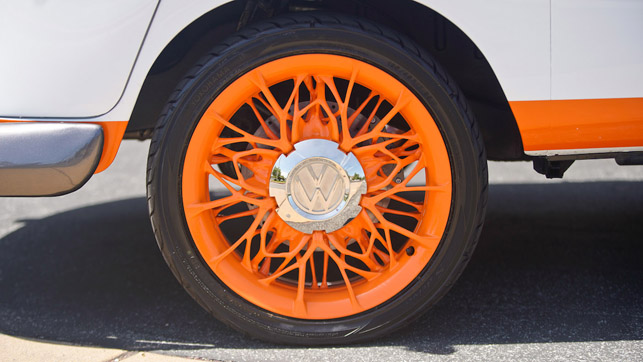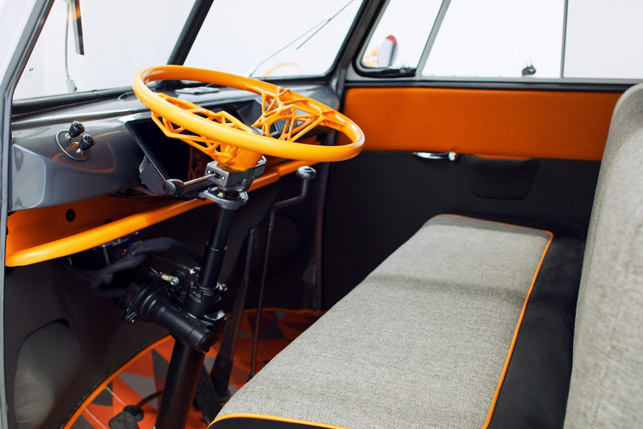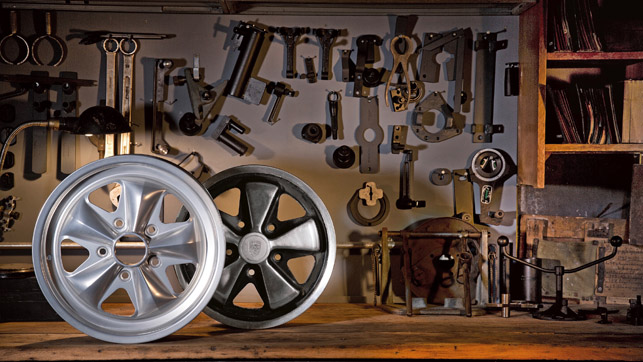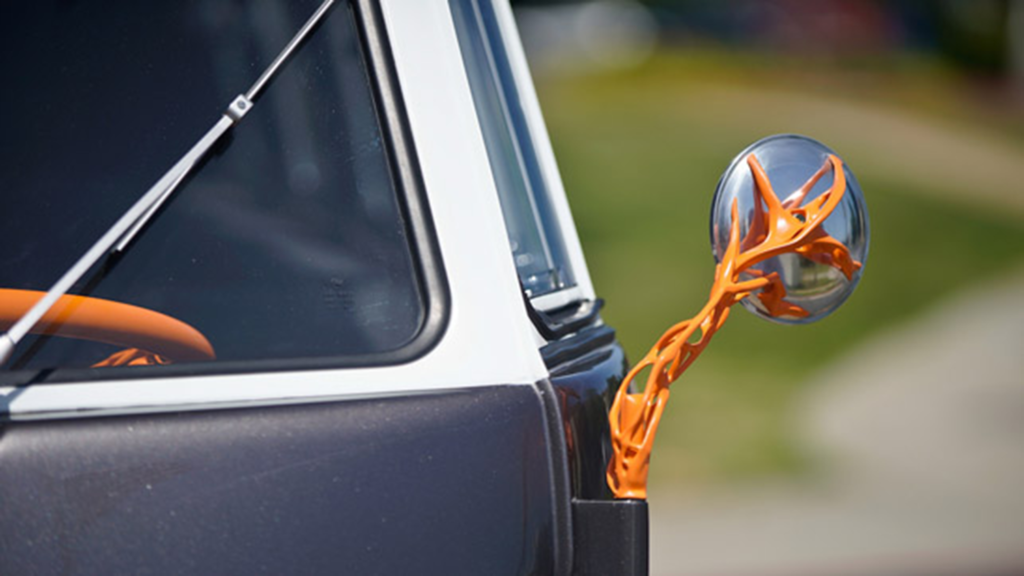If algorithmic design is going to take off, then aesthetics are going to get weird. Al Dean wonders if the public is really ready for the look of generative design – or will they not give two Fuchs either way?
Autodesk issued a blog post recently about work it has done with Volkswagen’s Innovation and Engineering Center California (IECC) to celebrate the 20th anniversary of VW’s largest vehicle research facility outside of Germany.
The project focused on the retrofitting of a 1962 Type 2 Microbus with an all-electric drive system, voice command technology and more.
The vehicle also features a number of components that had been run through Autodesk’s generative design software – specifically, seat supports inside the cabin, the wing mirrors, the steering wheel (which is lovely), and perhaps most impressively, the rims.
While you can debate the merits of reducing fractions of a kilogram from a steering wheel when you’ve just added a half tonne of battery, or the point of redesigning an assembly and removing almost all adjustability for the sake of it, some of the components look amazing. Personally speaking, I really like the steering wheel and the rims. The rims, in particular, have some interesting properties.

Autodesk executives claim that these are 18% lighter than the standard steel wheels – presumably due to changes in manufacturing processes, materials and geometry. Of course, these parts also have that certain look that I’ve seen described many ways: ‘bird bones’, ‘alien autopsy’, ‘giegercad’ or, most recently, ‘barbed wire dipped in fresh cow dung’.
I like them, because I have an interest in the technology that drives those forms, in the design system chooses certain pathways over other options and makes the decision to remove material elsewhere. As with all aesthetic choices and preferences, it is entirely personal. It’s an aesthetic that wears its heart and its origins on its sleeves, in the form of conspicuous computation.
This reminds me of a story I read recently about how the truly iconic Fuchs rim design came to be. The background is that the Porsche 911S was the first to be designated the S suffix, denoting a more powerful engine and, eventually, the iconic five-spoke aluminium rims.

According to Porsche’s official history, during development, it was merely specified as an alloy wheel and that it should be a lighter weight rim than the standard 911 – with the target weight saving to be 3 kilograms per wheel, compared to the steel rim already in use. In 1965, this was a pretty hefty design goal for cast aluminium wheels, as lighter weight designs could often not handle expected loads.

The first Fuchs design next to the final cloverleaf design. Image courtesy of Porsche AG
Enter Otto Fuchs (the company, not the man); it took on the challenge of resolving that eternal quandary of lower weight versus greater durability. What Fuchs did was avoid cast aluminium and instead, a blank was forged, and the entire rim area from outer to inner flanges was rolled out.
The design presented to the Porsche board always had a five-spoke design, but the spokes tapered towards the end (you can see them in Figure 4). According to the minutes from the meeting, “In contrast to our proposal, Mr. Porsche Jr. changed the shape of the five connecting pieces between the hub and the rim for reasons of style and appearance. While our design was well-adapted to the shape of the series vehicles now being retired, the shape developed by Mr. Porsche Jr. appears more harmonious with the new vehicle.”
I think this is the perfect example of how this technology might be applied in the future to the greatest effect: computation and adoption of new methods and techniques where appropriate, certainly – but with the designer/engineer on hand to take those novelties and new ideas into fruition and production, lending both mechanical and aesthetic steers and rework where needed.
Will folks take to the automated output from design systems if presented without a filter? I think most would prefer something a little more considered and thoughtful.






